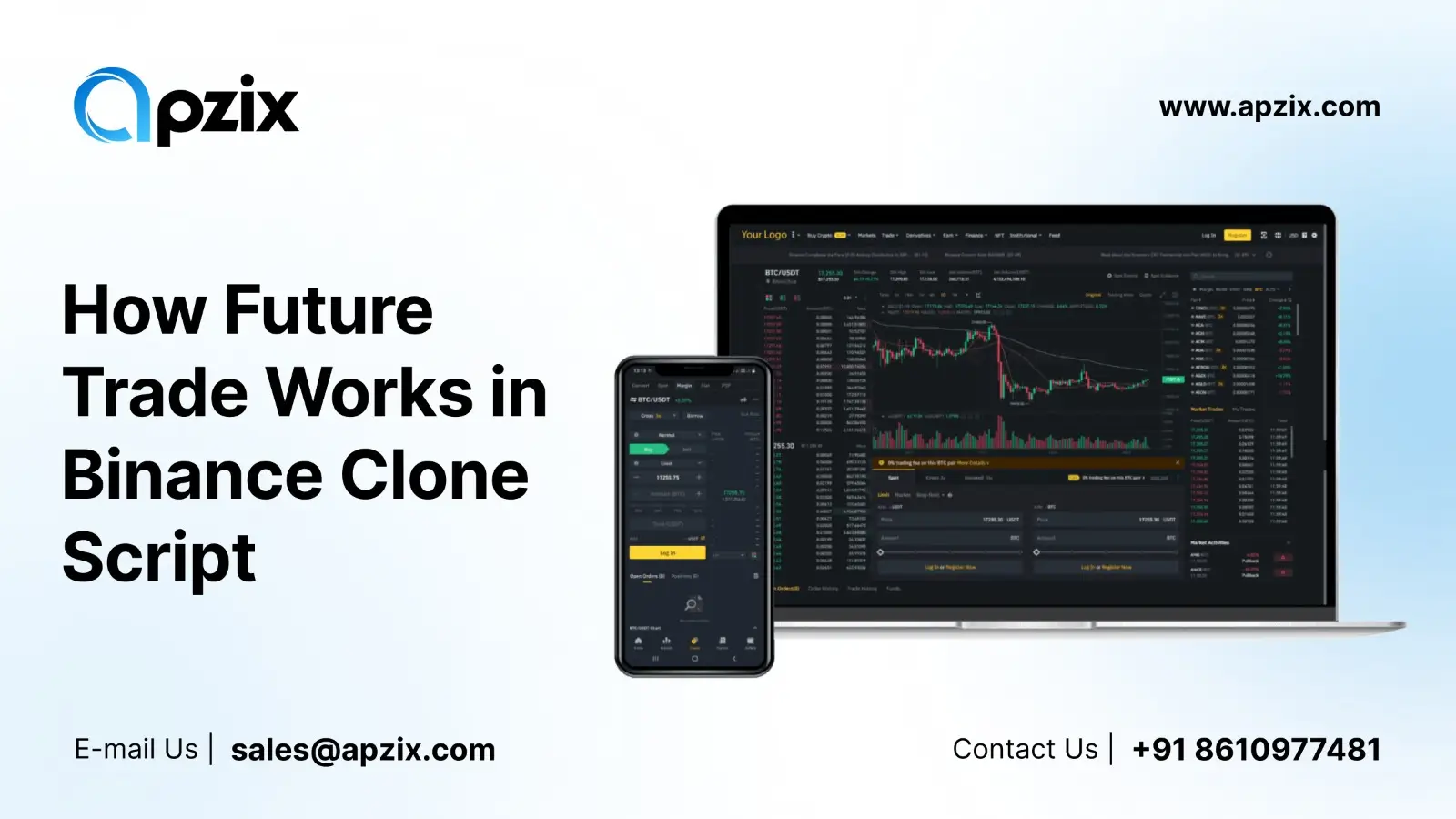
Futures trading lets users buy or sell contracts based on cryptocurrency prices at a future time. Instead of trading the actual coins, traders deal with agreements that represent those coins. This allows them to profit from price changes without holding the actual asset.
A Binance Clone Script includes this feature so your platform users can trade futures just like on Binance, with options to trade larger amounts using leverage and benefit whether prices go up or down.
What is Futures Trading?
Futures trading means agreeing to buy or sell a cryptocurrency at a certain price later. Traders don’t exchange the real coins immediately they trade contracts tied to the price of the coin.
1. Leverage — Trading with Borrowed Money
Leverage lets users borrow funds to make trades bigger than their actual balance. For example, with 10x leverage, someone with $100 can open a position worth $1,000.
This can increase profits if prices move in their favor, but it also increases risk and losses if prices move against them.
2. Going Long or Short
Traders can go long if they expect prices to rise or go short if they expect prices to fall. This allows making gains whether the market is moving up or down.
4. Margin and Liquidation
To open a futures trade, users must deposit an initial margin as a guarantee. They must maintain a maintenance margin to keep the trade open.
If the losses reduce their margin below this level, the system automatically closes the trade — called liquidation — to prevent further loss.
5. Types of Futures Contracts
Perpetual Contracts: No expiry date; users can hold positions indefinitely.
Fixed-term Contracts: Expire on a set date and settle at that time.
Most Binance Clone Scripts support at least perpetual contracts.
6. Real-Time Market Data and Tools
The platform provides live prices, charts, order books, and technical indicators so traders can analyze market trends before trading.
Users can place:
Market orders — trade immediately at the best price.
Limit orders — trade at a specified price later.
Stop-loss / Take-profit orders — automatically close trades to limit losses or secure profits.
7. Risk Management and Safety Features
The platform’s risk system calculates:
How much leverage is being used.
When to close losing trades automatically.
Profit and loss for each open trade.
This protects the trader and the exchange from excessive losses.
8. Admin Controls for the Exchange Owner
Set leverage limits for each trading pair.
Choose which cryptocurrencies are available for futures.
Adjust trading, funding, and liquidation fees.
Monitor all trades and liquidations.
Enable or disable futures features as needed.
This helps manage the platform according to market and regulatory needs.
How the Exchange Makes Money from Futures Trading?
Trading Fees: Small fees on each futures trade add up with volume.
Funding Fees: In perpetual contracts, traders pay fees between long and short sides; the platform can take a cut.
Liquidation Fees: Fees charged when positions are forcibly closed.
User Journey Example
A typical user would:
Sign up and deposit funds into a futures wallet.
Select a trading pair, like BTC/USDT.
Choose leverage (e.g., 20x) and pick long or short.
Place a market or limit order.
Monitor the trade using live charts and profit/loss updates.
Close the trade manually or with stop-loss/take-profit orders.
If margin falls too low, the system automatically closes the trade.
Summary
Futures trading lets users trade on margin and profit from price changes in both directions. Adding futures to a Binance Clone Script attracts more traders and creates additional revenue through fees and funding.With good risk management, real-time data, and admin controls, futures trading can grow your crypto exchange and offer users a powerful way to trade.











